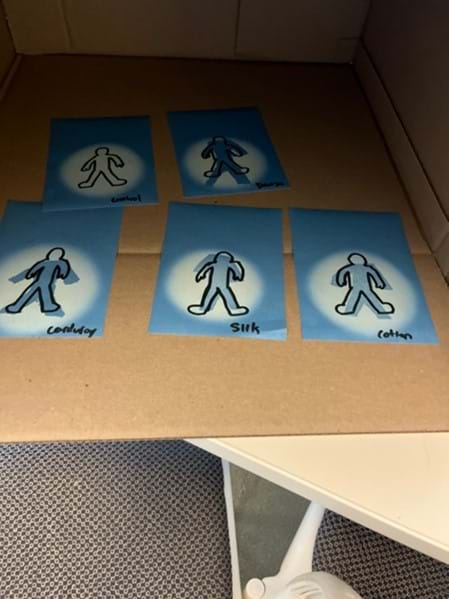
Summary
Students design beach clothing that is both fashionable and functional, meeting two key criteria: the clothing stays cool (considering factors such as fabric weight and thickness) and effectively shields against ultraviolet (UV) radiation. By the end of this activity, students gain a deeper understanding of how UV radiation affects the skin and observe how different fabrics interact with UV light.Engineering Connection
Textile engineers specialize in designing and improving fabrics and fibers. They work on developing materials that can block or reduce UV radiation while remaining comfortable and breathable. They might experiment with different weaves, fabric blends, and treatments to enhance the UV protection of clothing.
Product design engineers work on creating the overall design of UV-protected clothing, ensuring that it is not only functional in blocking UV rays but also stylish and comfortable to wear.
Learning Objectives
After this activity, students should be able to:
- Describe the impacts of UV radiation from sunlight on human skin.
- Observe differences in skin reactivity to different fabrics.
- Describe how clothing can be created to protect human skin from UV radiation from sunlight.
Educational Standards
Each TeachEngineering lesson or activity is correlated to one or more K-12 science,
technology, engineering or math (STEM) educational standards.
All 100,000+ K-12 STEM standards covered in TeachEngineering are collected, maintained and packaged by the Achievement Standards Network (ASN),
a project of D2L (www.achievementstandards.org).
In the ASN, standards are hierarchically structured: first by source; e.g., by state; within source by type; e.g., science or mathematics;
within type by subtype, then by grade, etc.
Each TeachEngineering lesson or activity is correlated to one or more K-12 science, technology, engineering or math (STEM) educational standards.
All 100,000+ K-12 STEM standards covered in TeachEngineering are collected, maintained and packaged by the Achievement Standards Network (ASN), a project of D2L (www.achievementstandards.org).
In the ASN, standards are hierarchically structured: first by source; e.g., by state; within source by type; e.g., science or mathematics; within type by subtype, then by grade, etc.
NGSS: Next Generation Science Standards - Science
| NGSS Performance Expectation | ||
|---|---|---|
|
HS-ETS1-3. Evaluate a solution to a complex real-world problem based on prioritized criteria and trade-offs that account for a range of constraints, including cost, safety, reliability, and aesthetics, as well as possible social, cultural, and environmental impacts. (Grades 9 - 12) Do you agree with this alignment? |
||
| Click to view other curriculum aligned to this Performance Expectation | ||
| This activity focuses on the following Three Dimensional Learning aspects of NGSS: | ||
| Science & Engineering Practices | Disciplinary Core Ideas | Crosscutting Concepts |
| Evaluate a solution to a complex real-world problem, based on scientific knowledge, student-generated sources of evidence, prioritized criteria, and tradeoff considerations. Alignment agreement: | When evaluating solutions it is important to take into account a range of constraints including cost, safety, reliability and aesthetics and to consider social, cultural and environmental impacts. Alignment agreement: | New technologies can have deep impacts on society and the environment, including some that were not anticipated. Analysis of costs and benefits is a critical aspect of decisions about technology. Alignment agreement: |
| NGSS Performance Expectation | ||
|---|---|---|
|
HS-ETS1-4. Use a computer simulation to model the impact of proposed solutions to a complex real-world problem with numerous criteria and constraints on interactions within and between systems relevant to the problem. (Grades 9 - 12) Do you agree with this alignment? |
||
| Click to view other curriculum aligned to this Performance Expectation | ||
| This activity focuses on the following Three Dimensional Learning aspects of NGSS: | ||
| Science & Engineering Practices | Disciplinary Core Ideas | Crosscutting Concepts |
| Use mathematical models and/or computer simulations to predict the effects of a design solution on systems and/or the interactions between systems. Alignment agreement: | Both physical models and computers can be used in various ways to aid in the engineering design process. Computers are useful for a variety of purposes, such as running simulations to test different ways of solving a problem or to see which one is most efficient or economical; and in making a persuasive presentation to a client about how a given design will meet his or her needs. Alignment agreement: | Models (e.g., physical, mathematical, computer models) can be used to simulate systems and interactions—including energy, matter, and information flows—within and between systems at different scales. Alignment agreement: |
Materials List
Each group needs:
- 1 large box (where students conduct their experiments, keeping the photoluminescent paper out of the room light)
- 7 sheets of 4 x 6 inch photoluminescent paper (e.g., https://www.amazon.com/Everyglow-Luminous-Photoluminescent-Halloween-Bluegreen/dp/B09LLYCZMT)
- 1 piece of 6 x 6-inch unbleached cotton fabric
- 1 piece of 6 x 6-inch white satin/silk fabric
- 1 piece of 6 x 6-inch denim fabric
- 1 piece of 6 x 6-inch corduroy fabric
- 1 pair of scissors (able to cut fabric)
- 1 UV flashlight
- 1 ruler
- 1 dark marker or sharpie
- 1 timer (e.g., stopwatch or phone timer)
Each student needs:
- 1 sticky note
- 1 Protective Fashion Worksheet
For the entire class to share:
- 1 digital scale
- 1 laptop/tablet and projector (for teacher to show PowerPoint and 4:17 minute video “Sun and Skin”)
Worksheets and Attachments
Visit [www.teachengineering.org/activities/view/rice-2898-protective-fashion-beach-edition-activity] to print or download.Pre-Req Knowledge
Students must understand:
- How to analyze mass in connection to thickness or density of fabric fibers.
- How skin cancer is associated with excessive exposure to UV radiation.
Introduction/Motivation
When you head to the beach, it's easy to focus on looking good and staying cool. But have you ever thought about how your beachwear might protect you from the sun's harmful ultraviolet (UV) rays? UV radiation is a type of energy that comes from the sun. You can’t see it with your eyes, but it’s there! Imagine it like a secret, invisible kind of sunlight.
There are three types of UV rays: UVA, UVB, and UVC. UVA rays are the ones that reach us the most, and they can cause your skin to age or wrinkle over time. UVB rays are a bit stronger and can cause sunburns. Luckily, the most harmful type, UVC, doesn’t reach us because the Earth's atmosphere blocks it out.
Even though UV rays are invisible, they can still hurt your skin if you're not careful. Spending too much time in the sun without sunscreen or protective clothing can lead to skin damage such as sunburn and increase your risk of skin problems later in life. That’s why it’s important to protect yourself from these invisible rays whenever you’re outside! Your skin's exposure to UV rays can be greatly reduced by choosing the right clothing, yet not all fabrics offer the same level of protection or comfort.
Today, you will step into the roles of textile and product design engineers. As textile engineers, you will focus on creating and improving fabrics that block or reduce UV radiation while also being comfortable and breathable. As product design engineers, you will have to ensure that UV-protected clothing is functional, stylish, and comfortable.
We will first explore how different fabrics affect UV protection. You’ll test how well different fabrics shield your skin from UV rays and keep you cool. Then, based on our research, you will design beach outfits that are both fashionable and functional. By the end, you'll be better equipped to make smart choices about what to wear at the beach, balancing style and sun safety. Your discoveries could even help others stay safe and enjoy their time in the sun!
Procedure
Background
Ultraviolet (UV) radiation is a form of electromagnetic radiation that comes from the sun and also man-made sources such as tanning beds and welding torches.
Radiation is the emission (sending out) of energy from any source. There are many types of radiation, ranging from very high-energy (high-frequency) radiation, such as x-rays and gamma rays, to very low-energy (low-frequency) radiation, such as radio waves. UV rays are in the middle of this spectrum. They have more energy than visible light, but not as much as x-rays.
Sunlight is the main source of UV radiation, even though UV rays make up only a small portion of the sun’s rays. Different types of UV rays reach the ground in different amounts. About 95% of the UV rays from the sun that reach the ground are UVA rays, with the remaining 5% being UVB rays.
The strength of the UV rays reaching the ground depends on numerous factors, such as:
- Time of day: UV rays are strongest between 10 a.m. and 4 p.m.
- Season: UV rays are stronger during the spring and summer months. This is less of a factor near the equator.
- Distance from the equator (latitude): UV exposure goes down as you get farther from the equator.
- Altitude: More UV rays reach the ground at higher elevations.
- Cloud cover: The effect of clouds can vary, but what’s important to know is that UV rays can still reach the ground on a cloudy day.
- Reflection off surfaces: UV rays can bounce off surfaces such as water, sand, snow, pavement, or even grass, leading to an increase in UV exposure.
- Contents of the air: Ozone in the upper atmosphere, for example, filters out some UV radiation.
Before the Activity
- Gather materials. Make sure to store photoluminescent paper in a cool, dark place.
- Make copies of the Protective Fashion Worksheet (one per student).
- Set up each groups’ large box in a stable way, so group members can experiment inside the box while preventing room light from interacting with the photoluminescent paper.
- To ensure the photoluminescent paper is not prematurely exposed, place each group’s photoluminescent sheets inside their large boxes that they will experiment in.
- Pre-cut each type of fabric into 6 x 6-inch squares.
- (Optional) Have students research UV radiation or assign as homework.
During the Activity
Ask
- Go through the Introduction and Motivation section with the class.
- Show students the PowerPoint Presentation.
- (Optional) Go through the steps of the Engineering Design Process, if necessary.
- Show students the 4:17 minute video “Sun and Skin.”
- Hand out sticky notes to each student.
- After watching the video, have students think about the following: Besides wearing sunscreen, how can people take preventive measures against skin cancer at the beach?
- Have students write their idea on a sticky note and paste their ideas on the white board.
- Once everyone has added their idea to the board, work as a class to sort the students answers into groups.
- Discuss each idea as a class. (Potential answers: Wear clothing that blocks UV radiation, such as long-sleeve shirts or wide-brimmed hats; choose clothing made from UV-blocking fabrics; seek shade; avoid peak sun hours; wear UV-blocking sunglasses; be mindful of reflective surfaces like water and sand; check the UV Index.)
- Give students 5 minutes to fill out the Pre-Activity section of the Protective Fashion Worksheet.
Research
- Organize students into groups of 3-4.
- Go over the activity steps as a class.
- Have students choose group roles (can be rotated):
- Role 1: Draw a large person-shape on the sun-sensitive paper.
- Role 2: Design the outfit (cut the fabrics).
- Role 3: Weigh the fabrics at the scale/keep time.
- Role 4: Shine the UV flashlight on the person-shape for the allotted time.
- Everyone: Record metrics and observations agreed upon by group.
- Have students do the first experiment to get their control data.
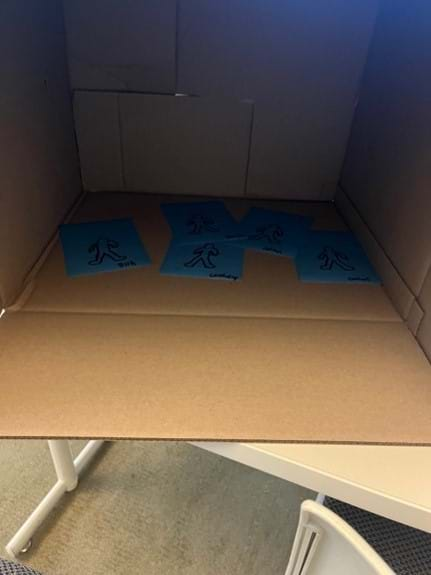
Preparing for the experiments: Student-prepared photoluminescent sheets are shown in a large box. Each sheet has a person-shaped drawn on it, and each is labeled with the fabric to be tested or as the control. - Have students cut their fabrics into the dimensions and shape of their person-shape.
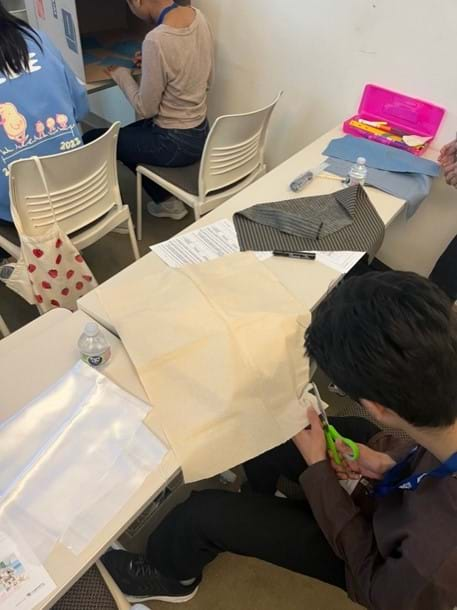
A student cuts a piece of cotton fabric to be tested. 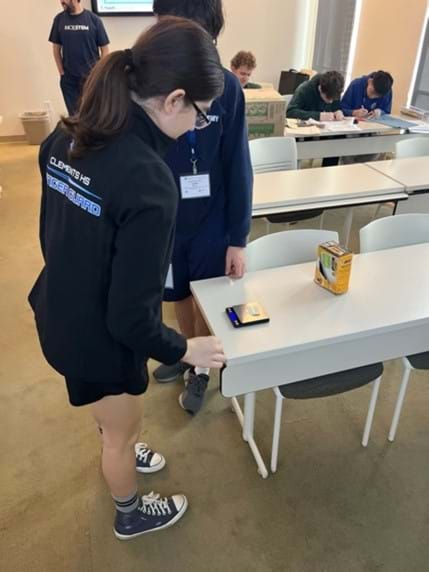
Students measure the mass of their cut fabric. - Have students test each fabric, recording their observations and data in the data table in the Protective Fashion Worksheet.
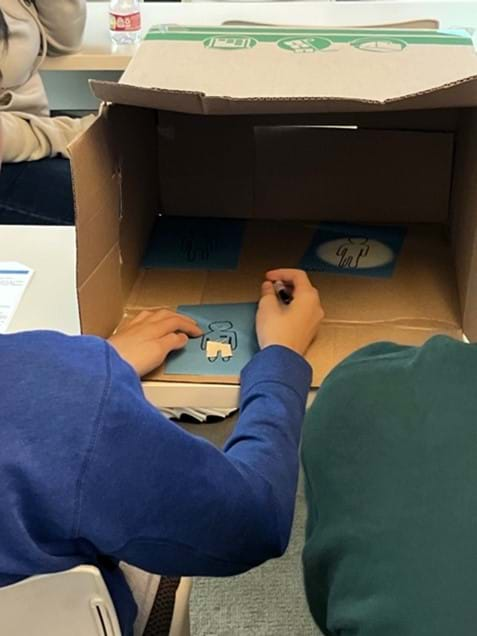
Student adjusts the cut cotton fabric to fit the person-shape on their photoluminescent paper. 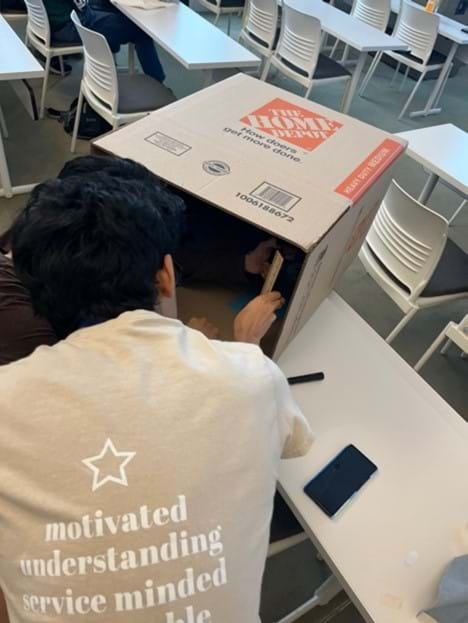
Student measures the distance between the UV flashlight and their person-shape on the photoluminescent paper. 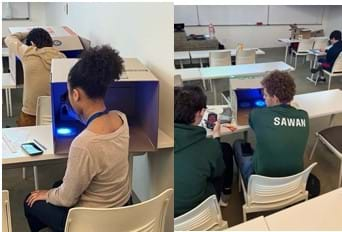
Students shine their UV flashlights on their person-shapes on photoluminescent paper while timing themselves (or with a group member) for the 2-minute UV light exposure. 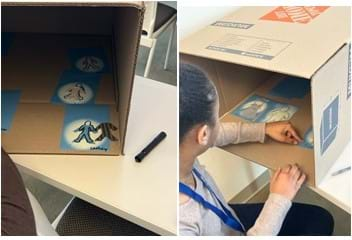
Students visually compare their experimental findings with their control findings (e.g., by comparing color changes). 
Students have completed each experiment and use their observations to refine their color descriptions between each experiment and decide which fabric was most effective. - After groups test each fabric and record their observations, give students time to discuss the questions in the Data Analysis section of the Protective Fashion Worksheet.
- After the group discusses the questions, have each student individually answer the questions in their worksheet.
Brainstorm, Design, and Plan
- Give students time to brainstorm and sketch three beach outfits with their groups.
- Walk around the room while students sketch their designs and offer advice or ideas if necessary.
Test
- Give students time to test their three designs, recording their data and observations in the second data table in the Protective Fashion Worksheet.
Improve/Reflect
- Have students answer the questions in the Improvement section of the worksheet.
- (Optional) Give students time to redesign and test their beach outfits.
- (Optional) Have each group present their design and results to the class.
Vocabulary/Definitions
mass: The amount of matter in an object.
skin cancer: The uncontrolled growth of abnormal cells in the epidermis, the outermost layer of skin.
UV radiation: A form of non-ionizing radiation that is emitted by the sun and also man-made sources such as tanning beds.
Assessment
Pre-Activity Assessment
Class discussion: Have students watch the video entitled “Sun and Skin.” After watching the video, have students ponder the following: Besides wearing sunscreen, how can people take preventive measures against skin cancer at the beach?
Activity Embedded (Formative) Assessment
Worksheet: Students complete the Protective Fashion Worksheet.
- During the experiment, facilitate student actions and strategically monitor student progress in recording metric data and being appropriately descriptive of the color changes and comparisons to the control experiment.
- Assist students with any issues in cutting fabric or properly handling UV flashlights.
- Monitor students’ data tracking to ensure that their metrics and observations are appropriate.
Post-Activity (Summative) Assessment
Reflection: After the procedure, have students reflect on the following questions:
- Which fabric type would be the coolest fabric to wear to the beach?
- Which fabric type would be the best at protecting against UV radiation?
- Which fabric type would be the coolest and best at UV radiation protection?
- Which of their designs would be the coolest and provide the best UV radiation protection?
Have students reflect on the science concepts they explored and/or the science and engineering skills they used by completing the Making Sense Assessment.
Troubleshooting Tips
- Make sure students test the same beach outfit for each fabric type for the fabric testing portion of the activity,
- Make sure students are shining their UV flashlight 6 to 8 inches above their experiments on photoluminescent paper.
- Make sure students are recording their data on their provided handouts.
Activity Extensions
- To extend this experiment, teachers may have students additionally test commercialized sun-protective fabrics such as rash guards (polyester) and nylon. These tests may help students determine whether these marketed sun-protective fabrics are more protective than the fabrics highlighted in the original experiment.
Activity Scaling
- To modify this experiment, teachers may have students test different levels of UV radiation exposure on skin, simulated as different times of the day. To do this, students may only test UV radiation on a person-shape on photoluminescent paper (control in the original experiment) and complete experiments of shining the UV flashlight toward the photoluminescent paper at different angles. A protractor will likely be needed.
Subscribe
Get the inside scoop on all things TeachEngineering such as new site features, curriculum updates, video releases, and more by signing up for our newsletter!More Curriculum Like This

After seeing ultraviolet-sensitive beads change color and learning how they work, students learn about skin anatomy and the effects of ultraviolet radiation on human skin, pollution's damaging effect on the ozone layer that can lead to increases in skin cancer, the UV index, types of skin cancer, AB...

Students learn how to prevent exposure to the sun's ultraviolet rays. Students systematically test various sunscreens to determine the relationship between SPF (sun protection factor) value and sun exposure.

Students learn about the electromagnetic spectrum, ultraviolet radiation (including UVA, UVB and UVC rays), photon energy, the relationship between wave frequency and energy (c = λν), as well as about the Earth's ozone-layer protection and that nanoparticles are being used for medical applications

Through role playing and problem solving, this lesson sets the stage for a friendly competition between groups to design and build a shielding device to protect humans traveling in space. The instructor asks students—how might we design radiation shielding for space travel?
References
“Does UV Radiation Cause Cancer? | American Cancer Society.” www.cancer.org, www.cancer.org/cancer/risk-prevention/sun-and-uv/uv-radiation.html.
Sun and Skin. “Sun and Skin.” NIH News in Health, 8 Sept. 2017, newsinhealth.nih.gov/2014/07/sun-skin.
Copyright
© 2024 by Regents of the University of Colorado; original © 2024 Rice UniversityContributors
Rubiona GraingerSupporting Program
Research Experience for Teachers Program, Rice UniversityAcknowledgements
This curriculum was developed under National Science Foundation Nanotechnology Research Experience for Teachers, Fund Code NSF EEC-1406885. Any opinions, findings, and conclusions or recommendations expressed in this material are those of the authors and do not necessarily reflect the views of the National Science Foundation.
Last modified: September 4, 2024










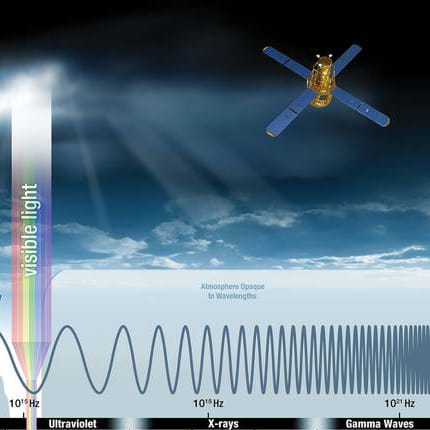
User Comments & Tips